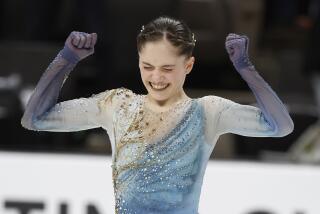Reform Measures Could Make History of the 6.0
Figure skating’s perfect mark of 6.0 dates to at least 1892, the year the International Skating Union was founded.
At the time, compulsory figures were traced on the ice three times with one skate, then three times with the other. Judges scored every tracing, awarding a maximum of a point for each one. Therefore, a maximum of six points was given for each figure.
The scale has evolved, but the system’s value has not. Skaters start with a 6.0, and deductions are taken for missed elements or mistakes.
The first Olympic figure skating competition took place at the 1908 Summer Games in London. The Winter Olympics began in 1924 in Chamonix, France.
Here’s how the scoring system in figure skating compares with the proposal from International Skating Union President Ottavio Cinquanta. The ISU Congress must approve the plan.
The Current System
* Nine judges utilize a 6.0 scoring system, in which each skater begins with a base mark of 6.0 and deductions are made for mistakes, missed elements and the judge’s assessment of the aesthetics.
Reform Proposal
* Replace the traditional 6.0 scoring system with a system that would give points for each technical element (i.e. jumps, spins, footwork), the difficulty of the elements and their execution.
* Fourteen judges, rather than nine, would be used, but only the scores from seven of them would count. A computer system would randomly select the seven marks.
* Winner would be determined by highest point total.
More to Read
Go beyond the scoreboard
Get the latest on L.A.'s teams in the daily Sports Report newsletter.
You may occasionally receive promotional content from the Los Angeles Times.








